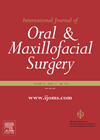
Journal Reviews
Biopsy sites with a diagnosis of pemphigusand mucous membrane pemphigoid
This is a systemic review and met-analysis to critically evaluate optimal biopsy site for patients presenting with pemphigus or mucous membrane pemphigoid. Historically, diagnosis is made if H&E staining direct immunofluorescence and serological testing of auto-antibodies. Direct immunofluorescence has been...
A safe management pathway for low-risk head and neck cancer suspected referrals
Head and neck cancer is the eighth most common malignancy and numbers are increasing. This has led to increasing number of suspected cancer referrals which, with imposition of the 28-day Faster Diagnosis Standard implemented in 2020, has further burdened the...
Adenoid cystic carcinoma – insights from a national database
Adenoid cystic carcinoma (AdCC) is a rare cancer of the salivary glands that accounts for approximately 1% of all head and neck malignancies. Hallmarks of this cancer type include a predilection for perineural infiltration, a prolonged clinical course with late...
Pharyngoplasty for palatal snoring
This prospective Belgian study looked at the benefits of barbed reposition pharyngoplasty in the management of patients with isolated unilevel palatal snoring. This technique involves using a barbed suture and repositioning the palatopharyngeal muscle in a more lateral and anterior...
Postoperative ultrasound surveillance in patients undergoing hemithyroidectomy
Hemithyroidectomy, as opposed to total thyroidectomy with radioiodine remnant ablation, is now increasingly undertaken for low-risk, differentiated thyroid cancer. If on histology, this proves ‘high risk’, completion thyroidectomy is done fairly soon. In this retrospective study, a total of 105...
Chronic rhinosinusitis – a pre-malignant condition?
Nasopharyngeal carcinoma (NPC) is a relatively uncommon diagnosis in the West but is prevalent in Southeast Asia. Several factors have been established to be associated with a higher risk of developing NPC, including salted fish consumption, smoking, alcohol, and Epstein...
THRIVE: redefining airway management in endoscopic oesophageal surgery
Transnasal humidified rapid insufflation ventilatory exchange (THRIVE) is no longer just a tool to help anaesthetists secure a difficult airway. Thanks to the work of authors like Yang and colleagues, it is being revolutionised to provide apnoeic oxygenation during endoscopic...
Surgical variations in maxillomandibular surgery treating sleep apnoea
This is a scoping review further highlighting the success in curing sleep apnoea with a maxillomandibular complex advancement. The variations outlined are on East and Southeast Asian patients to reduce the aesthetic concern of bi-maxillary protrusion when large advancements are...
Thyroidectomy - a pictorial walk through the surgical steps
We as ENT surgeons work closely with the endocrinologist to provide MDT care for patients with a variety of pathologic conditions of the thyroid gland, including benign, malignant and hormonal disease processes. Surgery plays a central role for a variety...
Does transoral robotic surgery improve outcomes among patients with head and neck cancer of unknown primary?
A tonsillectomy and tongue base mucosectomy is becoming increasingly accepted as the optimal surgical intervention to aid in identifying the primary source of a p16+ / HPV-related squamous cell carcinoma (SCC) of unknown origin, given that this disease almost exclusively...
Lymph node metastases in papillary thyroid cancer
This retrospective Korean cohort study looked at the risk factors associated with bilateral lateral lymph node metastases in patients with unilateral papillary thyroid cancer. There were 11 patients who met the inclusion criteria across an 11-year period from 2009 to...
Helmets make a difference in bicycle injuries
This is a meta-analysis of maxillofacial injuries arising from riding a bicycle. The incidence of maxillofacial fractures in cycling accidents varies from 3-20% and, whilst the effectiveness of helmets in preventing traumatic brain injuries is well known, their protective effect...














